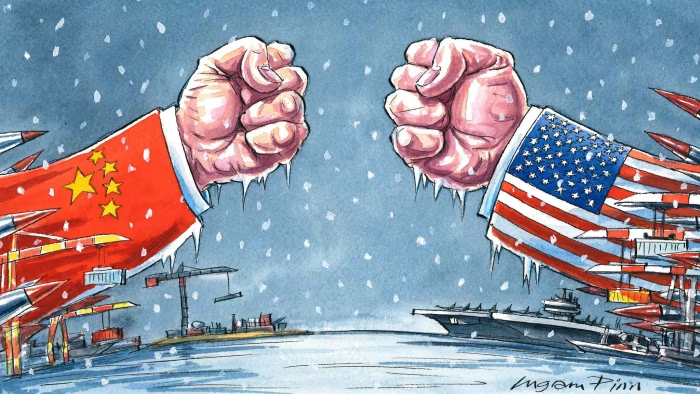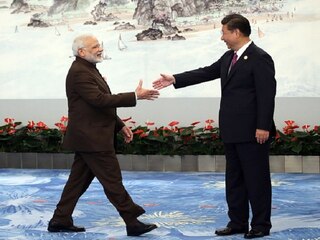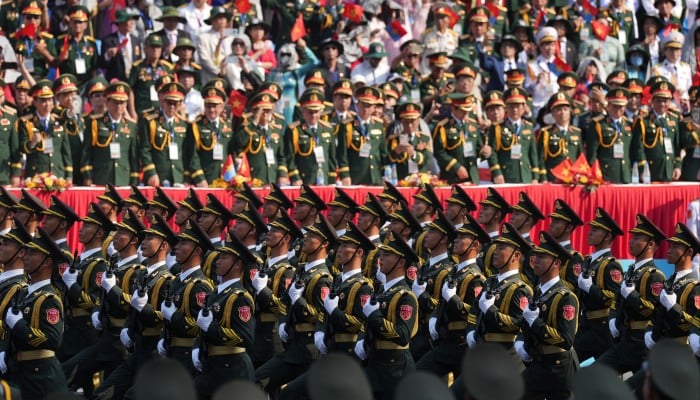 By Our Reporter
By Our Reporter
Nepal’s trade deficit has reached Rs. 880 billion, more than half of the total budget of the country, in the first six months of the current fiscal year. Nepal’s total budget for the current fiscal year is Rs. 1647 billion.
According to the Foreign Trade Statistics of the Department of Customs, the country’s trade deficit has increased by 46.64 per cent to Rs. 880.49 billion in the first six months of the current fiscal year. Poor export trade has led to a whopping trade deficit.
The import trade increased by 51.13 per cent to Rs. 999.34 billion during the review period, leading to the high trade deficit. In the same period of the last fiscal year, the country had imported goods worth Rs. 661.24 billion.
Although export trade also increased by 95.48 per cent to Rs. 118.85 billion during the first six months (mid-July 2021 to mid-January 2022) of the current fiscal year, the export remained merger compared to the export. Nepal had exported goods worth Rs. 60.79 billion in the same period last fiscal year.
According to the statistics, total foreign trade has also increased. The country’s foreign trade has reached Rs. 1,118.19 billion during the review period which is 54.86 per cent more than the previous year.
With the increase in exports, its contribution to total export trade still reached only 10.63 per cent during the review period while the share of import trade is 89.37 per cent.
In the six months, the country imported petroleum products worth Rs. 96.71 billion, including diesel worth Rs. 61.47 billion, petrol of Rs. 29.27 billion and aviation fuel worth Rs.5.33 billion. Likewise, the country spent Rs. 29.2343 billion to import LPG gas.
Surprisingly, an agrarian country Nepal spent a huge amount to import foods. According to the statistics, Nepal imported potatoes worth about Rs. six billion, maize worth Rs. 11.71 billion, rice worth Rs. 27.09 billion and wheat worth Rs.3.1 billion.
Nepal’s export trade though increased was heavily dependent on palm and soybean oil which are not local products. Nepal imports raw palm and soybean oil and exports them after refining them. Surprisingly, Nepal spent more in importing crude soyabean oil and palm oil than it earned by exporting them.
According to the same statistics, soybean oil worth Rs. 34.26 billion was exported in the last six months of the current fiscal year while the country imported crude soybean oil worth Rs. 36.54 billion during the same period. Soybean oil is the major export of Nepal.
Similarly, palm oil worth Rs. 31.96 billion was exported in the first six months while crude palm oil worth Rs.27.88 billion was imported during the same period.
Cardamom worth Rs. 2.28 billion, tea and coffee worth Rs.2.2 billion, carpet worth Rs. 4.39 billion, felts worth Rs. 4.01 billion and sunflower seeds and oil worth Rs. 2.41 billion were exported during the review period.
The trade deficit is likely to widen further as Nepal has no products to export, neither could the government introduce any measures to reduce the import as businessmen have their upper hands in any government decisions.
Increasing import exerts pressure on foreign reserves besides leading to high inflation. As the country has to depend on everything, from food to fuel, imported, the poor people will find it difficult to maintain their livelihoods because of rising living costs.
 By Our Reporter
Nepal’s trade deficit has reached Rs. 880 billion, more than half of the total budget of the country, in the first six months of the current fiscal year. Nepal’s total budget for the current fiscal year is Rs. 1647 billion.
According to the Foreign Trade Statistics of the Department of Customs, the country’s trade deficit has increased by 46.64 per cent to Rs. 880.49 billion in the first six months of the current fiscal year. Poor export trade has led to a whopping trade deficit.
The import trade increased by 51.13 per cent to Rs. 999.34 billion during the review period, leading to the high trade deficit. In the same period of the last fiscal year, the country had imported goods worth Rs. 661.24 billion.
Although export trade also increased by 95.48 per cent to Rs. 118.85 billion during the first six months (mid-July 2021 to mid-January 2022) of the current fiscal year, the export remained merger compared to the export. Nepal had exported goods worth Rs. 60.79 billion in the same period last fiscal year.
According to the statistics, total foreign trade has also increased. The country’s foreign trade has reached Rs. 1,118.19 billion during the review period which is 54.86 per cent more than the previous year.
With the increase in exports, its contribution to total export trade still reached only 10.63 per cent during the review period while the share of import trade is 89.37 per cent.
In the six months, the country imported petroleum products worth Rs. 96.71 billion, including diesel worth Rs. 61.47 billion, petrol of Rs. 29.27 billion and aviation fuel worth Rs.5.33 billion. Likewise, the country spent Rs. 29.2343 billion to import LPG gas.
Surprisingly, an agrarian country Nepal spent a huge amount to import foods. According to the statistics, Nepal imported potatoes worth about Rs. six billion, maize worth Rs. 11.71 billion, rice worth Rs. 27.09 billion and wheat worth Rs.3.1 billion.
Nepal’s export trade though increased was heavily dependent on palm and soybean oil which are not local products. Nepal imports raw palm and soybean oil and exports them after refining them. Surprisingly, Nepal spent more in importing crude soyabean oil and palm oil than it earned by exporting them.
According to the same statistics, soybean oil worth Rs. 34.26 billion was exported in the last six months of the current fiscal year while the country imported crude soybean oil worth Rs. 36.54 billion during the same period. Soybean oil is the major export of Nepal.
Similarly, palm oil worth Rs. 31.96 billion was exported in the first six months while crude palm oil worth Rs.27.88 billion was imported during the same period.
Cardamom worth Rs. 2.28 billion, tea and coffee worth Rs.2.2 billion, carpet worth Rs. 4.39 billion, felts worth Rs. 4.01 billion and sunflower seeds and oil worth Rs. 2.41 billion were exported during the review period.
The trade deficit is likely to widen further as Nepal has no products to export, neither could the government introduce any measures to reduce the import as businessmen have their upper hands in any government decisions.
Increasing import exerts pressure on foreign reserves besides leading to high inflation. As the country has to depend on everything, from food to fuel, imported, the poor people will find it difficult to maintain their livelihoods because of rising living costs.
By Our Reporter
Nepal’s trade deficit has reached Rs. 880 billion, more than half of the total budget of the country, in the first six months of the current fiscal year. Nepal’s total budget for the current fiscal year is Rs. 1647 billion.
According to the Foreign Trade Statistics of the Department of Customs, the country’s trade deficit has increased by 46.64 per cent to Rs. 880.49 billion in the first six months of the current fiscal year. Poor export trade has led to a whopping trade deficit.
The import trade increased by 51.13 per cent to Rs. 999.34 billion during the review period, leading to the high trade deficit. In the same period of the last fiscal year, the country had imported goods worth Rs. 661.24 billion.
Although export trade also increased by 95.48 per cent to Rs. 118.85 billion during the first six months (mid-July 2021 to mid-January 2022) of the current fiscal year, the export remained merger compared to the export. Nepal had exported goods worth Rs. 60.79 billion in the same period last fiscal year.
According to the statistics, total foreign trade has also increased. The country’s foreign trade has reached Rs. 1,118.19 billion during the review period which is 54.86 per cent more than the previous year.
With the increase in exports, its contribution to total export trade still reached only 10.63 per cent during the review period while the share of import trade is 89.37 per cent.
In the six months, the country imported petroleum products worth Rs. 96.71 billion, including diesel worth Rs. 61.47 billion, petrol of Rs. 29.27 billion and aviation fuel worth Rs.5.33 billion. Likewise, the country spent Rs. 29.2343 billion to import LPG gas.
Surprisingly, an agrarian country Nepal spent a huge amount to import foods. According to the statistics, Nepal imported potatoes worth about Rs. six billion, maize worth Rs. 11.71 billion, rice worth Rs. 27.09 billion and wheat worth Rs.3.1 billion.
Nepal’s export trade though increased was heavily dependent on palm and soybean oil which are not local products. Nepal imports raw palm and soybean oil and exports them after refining them. Surprisingly, Nepal spent more in importing crude soyabean oil and palm oil than it earned by exporting them.
According to the same statistics, soybean oil worth Rs. 34.26 billion was exported in the last six months of the current fiscal year while the country imported crude soybean oil worth Rs. 36.54 billion during the same period. Soybean oil is the major export of Nepal.
Similarly, palm oil worth Rs. 31.96 billion was exported in the first six months while crude palm oil worth Rs.27.88 billion was imported during the same period.
Cardamom worth Rs. 2.28 billion, tea and coffee worth Rs.2.2 billion, carpet worth Rs. 4.39 billion, felts worth Rs. 4.01 billion and sunflower seeds and oil worth Rs. 2.41 billion were exported during the review period.
The trade deficit is likely to widen further as Nepal has no products to export, neither could the government introduce any measures to reduce the import as businessmen have their upper hands in any government decisions.
Increasing import exerts pressure on foreign reserves besides leading to high inflation. As the country has to depend on everything, from food to fuel, imported, the poor people will find it difficult to maintain their livelihoods because of rising living costs. 



















Comments:
Leave a Reply